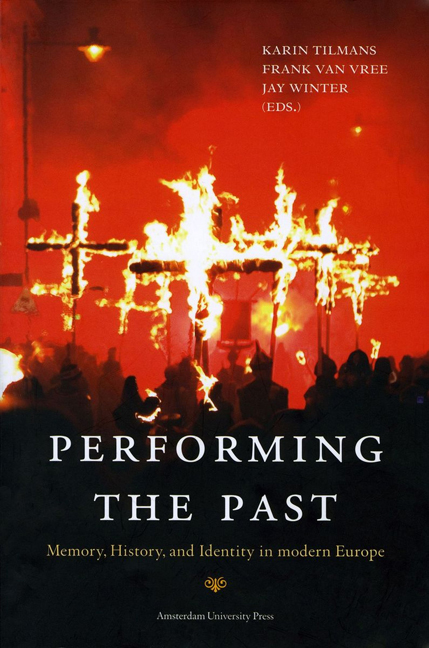Preface
Published online by Cambridge University Press: 15 January 2021
Summary
Performing the Past explores important trends and patterns in Western thinking about history, memory and identities since the nineteenth century. The key question we examine is this: since roughly 1800, how have Europeans configured their relation to the past through cultural practices, surrounding monuments, novels, plays, rituals, ceremonies, debates, films, academic scholarship, and individual human bodies? This book presents some of the ways scholars in different fields have come to understand this question and the rich array of approaches they have adopted in attempting to contribute to answers it.
In the first part of the book, we examine the framing of memory, history, and language in modern Europe. We then turn to performances of history and memory in popular culture, photography, theatre and body art. Film, fiction, and music form the substance of the third part of the book. Finally we consider narratives about the past in the political domain, moving from museums to court rooms, and finally to the institutions of the European Union, in their presentation of what Charles Maier has termed a ‘usable past’.
The writers who have contributed to this book present many different interpretations of the intersection of history, memory, and identity. What links them together is the way they treat all three as performative, as imbedded in cultural practices that individuals and groups fashion and in which other individuals and groups participate, either directly or over time. In different ways, we all maintain that remembrance is performative. It is an activity, something that happens in time and place, and that on every occasion when we come together to do the work of remembrance, the story we fashion is different from those that have come before. Re-enactment is both affirmation and renewal. It entails addressing the old, but it also engenders something new, something we have never seen before. Herein lies the excitement of performance, as well as its surprises and its distortions.
- Type
- Chapter
- Information
- Performing the PastMemory, History, and Identity in Modern Europe, pp. 7 - 8Publisher: Amsterdam University PressPrint publication year: 2012

